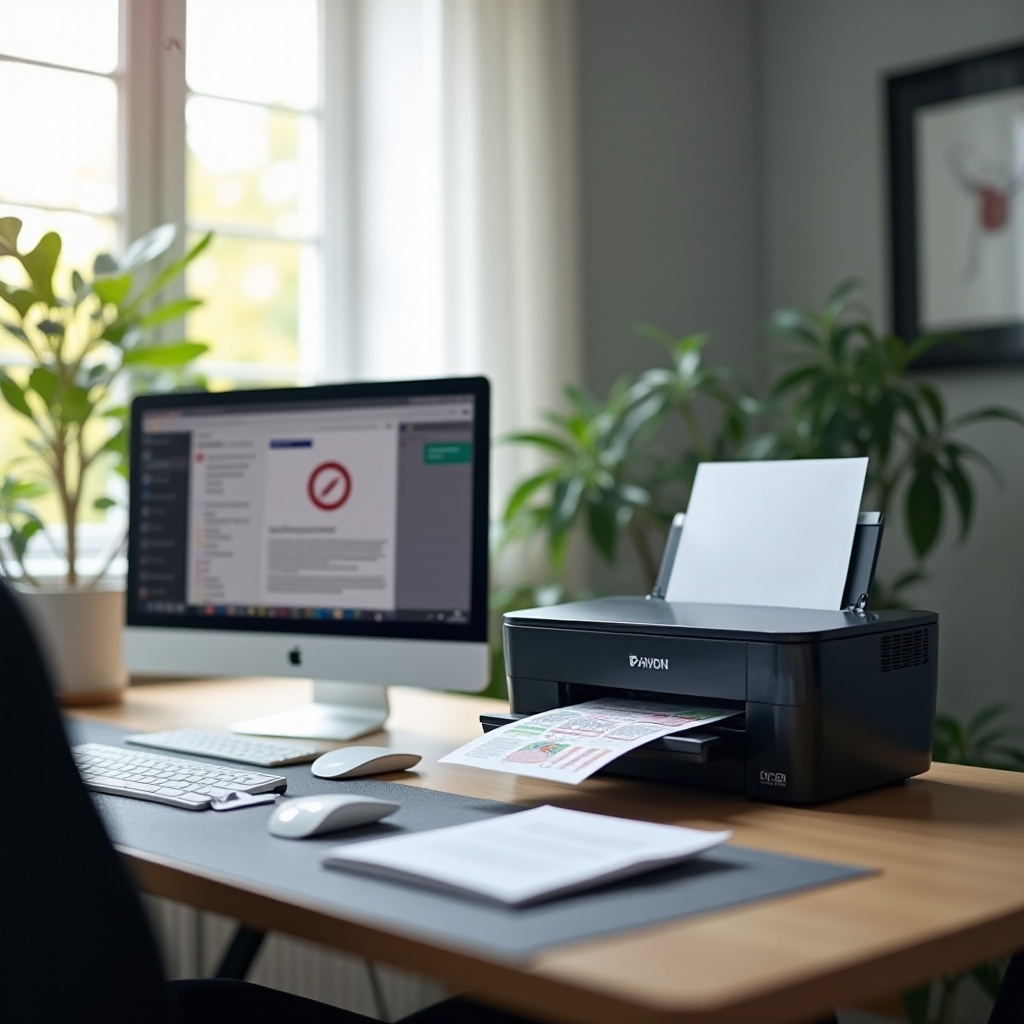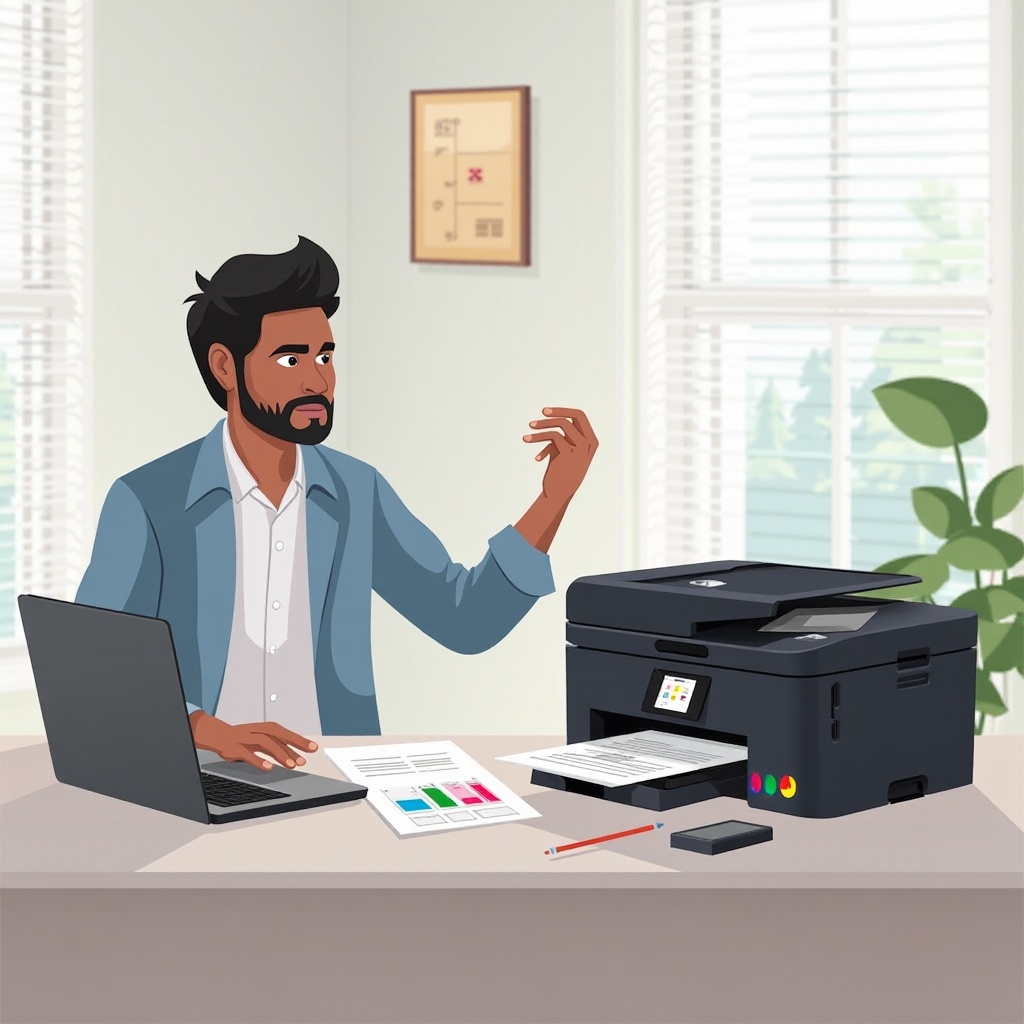Introduction
Printers have become an integral part of our daily lives, both in homes and offices. Whether it’s for generating hard copies of important documents or printing cherished family photos, printers are indispensable. Yet, there’s a frustrating problem that often occurs – the printer’s ink is full, but it refuses to print. This article seeks to unravel the mystery behind this issue and present practical troubleshooting solutions. By exploring common causes, quick fixes, and preventive measures, we aim to help you become proficient in resolving printer issues. Let’s delve into ensuring your printer operates seamlessly despite having a seemingly full ink status.

Common Causes of Printing Issues
When your printer displays full ink but doesn’t print, finding the root cause is imperative for effective troubleshooting. Let’s explore some of the common reasons behind this issue.
Software Glitches
Like computers, printers operate on software that allows them to interpret and process your commands. A glitch in this software can disrupt the process. Software bugs may prevent the printer from recognizing ink levels correctly or impede it from processing print commands accurately.
Connectivity Problems
Printers depending on network connections can be particularly susceptible to connectivity issues. Something as simple as a loose cable or a minor Wi-Fi disturbance can cause the printer to fail at executing print jobs, even if the ink cartridge is full.
Clogged Printhead
Over time, ink may dry out in the printhead, blocking the flow of new ink and leading to printing problems. This physical blockage prevents the printer from applying ink to paper, making it seem like it’s ignoring your commands.
Understanding these common causes marks the first step towards fixing the issue. Before diving into detailed solutions, let’s attempt some quick fixes.
Quick Fixes to Try First
To quickly restore your printer’s functionality, start with these initial checks and solutions.
Restart Printer and Computer
A simple restart can solve temporary glitches in devices. Turn off both your printer and computer, wait a few moments, and then switch them back on. This reset can resolve minor software hitches.
Check for Error Messages
Look for notifications on the printer’s display or error messages on your computer. These messages often offer insights into the problem, directing you to the appropriate solution.
Use Printer Diagnostic Tools
Most printers feature built-in diagnostic tools. Run these tools from your printer’s menu or related software on your computer to automatically detect and potentially fix underlying issues.
If these solutions don’t resolve your issue, a more detailed approach may be necessary, as outlined below.

In-Depth Solutions for Persistent Problems
For stubborn cases, a thorough investigation is required. Here’s how to methodically tackle complex printer issues.
Cleaning the Printhead
- Access your printer’s maintenance menu and select the printhead cleaning option.
- If the automatic clean fails, manually remove the printhead and clean it with a soft, damp cloth.
- Ensure all dried ink and debris are fully removed before reinstalling.
Updating Printer Drivers
- Visit the manufacturer’s website and locate the latest drivers for your printer model.
- Download and install updated drivers to resolve compatibility issues that might hinder printing.
- Reboot your computer to efficiently apply these changes.
Configuring Printer Settings
- Access your printer settings and review the default print options.
- Ensure that paper size, type, and quality settings align with your current printing needs.
- Confirm that the printer is set to “online” status, not “offline.”
Implementing these solutions typically resolves persistent issues. Yet, ensuring your software is up-to-date can also prevent these problems from arising initially.

Software and Firmware Updates
Regular updates help maintain the compatibility and functionality of your printer with evolving computer and network technologies.
Importance of Updates
Firmware updates frequently include bug fixes, performance improvements, and enhanced compatibility. By keeping your software current, you ensure seamless device communication.
How to Perform Updates
- Access printer settings on either the printer’s control panel or through your computer.
- Select the ‘update’ option if available or manually check the manufacturer’s website.
- Carefully follow installation prompts to complete the process.
Upon updating, your printer can handle tasks more efficiently with fewer errors. In addition to software updates, physical maintenance is also vital for optimal printer performance.
Physical Maintenance Checks
Physical upkeep ensures the effective operation of your printer over extended periods.
Inspect Cartridge for Damage
Remove the ink cartridge and check for visible cracks, leaks, or blockages. Replace or reseat cartridges as needed to assure proper compatibility with your printer.
Clean Printer Heads and Nozzles
Regularly clean the printer heads and nozzles using the appropriate maintenance option to prevent clogs and maintain print quality.
These checks can prevent many printing issues, sparing you time and frustration.
Preventive Measures for Long-Term Improvement
Adopting preventive measures can keep your printer in optimal working condition and reduce the likelihood of non-printing issues despite full ink.
Regular Maintenance Tips
- Schedule regular cleaning sessions for printheads and cartridges.
- Conduct diagnostic tests monthly to ensure all components are functioning properly.
Using Genuine Ink Cartridges
Whenever possible, use cartridges recommended by the printer manufacturer. Genuine cartridges generally work more reliably, offering optimal print quality without errors.
Following these preventive strategies should ensure smoother operation of your printer over the long term.
Conclusion
Dealing with a printer that refuses to print despite full ink may appear daunting. However, with this comprehensive guide, you can identify and resolve many common issues effectively. Whether it’s a quick fix or a thorough troubleshooting session, these insights equip you to handle printer problems confidently, ensuring continued productivity.
FAQs
Why does my printer say it’s out of ink when it’s not?
This could be due to software errors or connectivity issues. Checking drivers and resetting your devices might resolve it.
How often should I clean my printer’s printheads?
Clean your printheads every few months or whenever you notice a decline in print quality to maintain optimal performance.
Is it worth replacing my printer if these solutions don’t work?
If repeated troubleshooting fails and your printer frequently malfunctions, consider consulting a professional or replacing the device to avoid productivity loss.
Frequently Asked Questions
Why does my printer say it’s out of ink when it’s not?
This could be due to software errors or connectivity issues. Checking drivers and resetting your devices might resolve it.
How often should I clean my printer’s printheads?
Clean your printheads every few months or whenever you notice a decline in print quality to maintain optimal performance.
Is it worth replacing my printer if these solutions don’t work?
If repeated troubleshooting fails and your printer frequently malfunctions, consider consulting a professional or replacing the device to avoid productivity loss.
